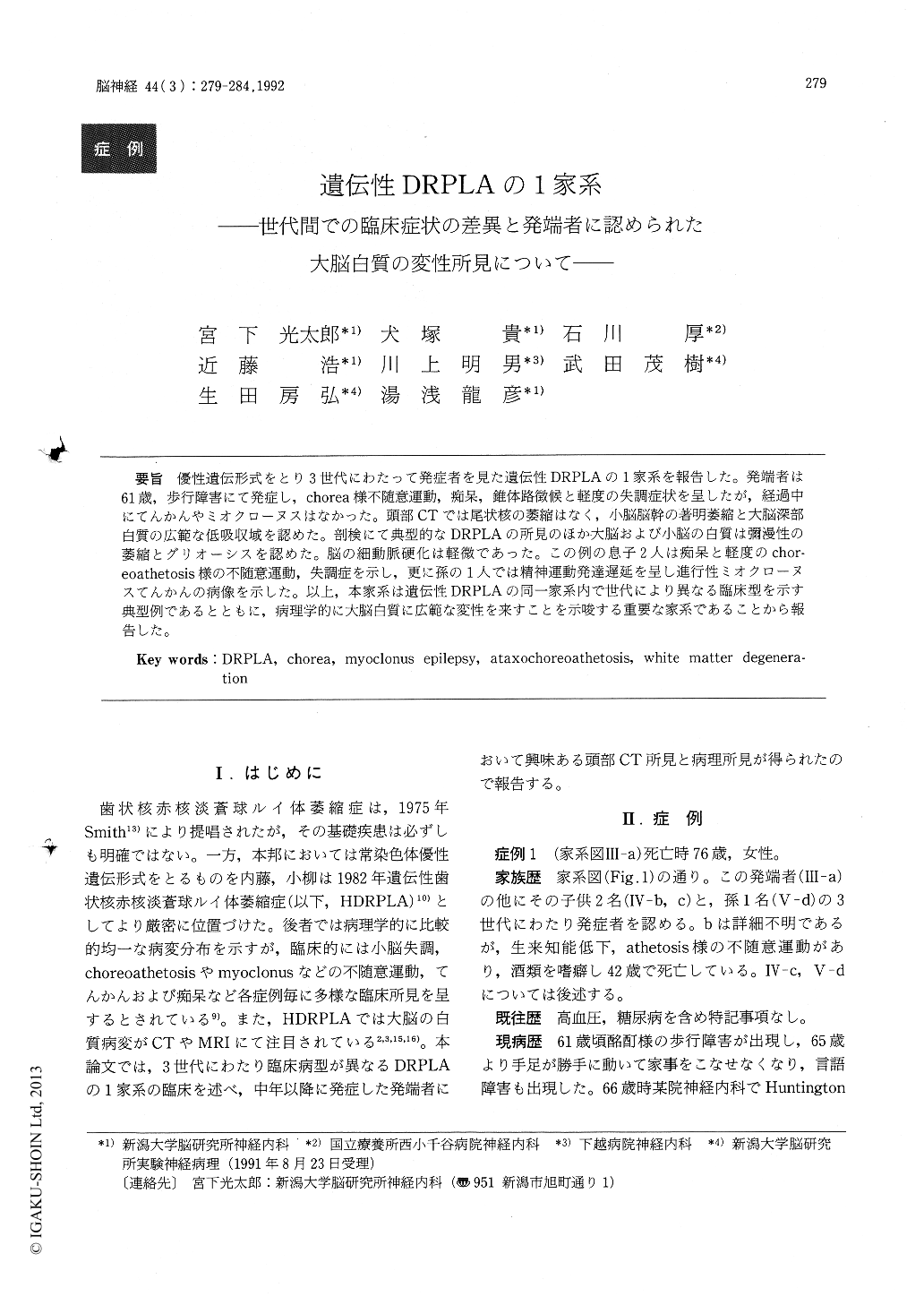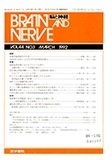Japanese
English
- 有料閲覧
- Abstract 文献概要
- 1ページ目 Look Inside
優性遺伝形式をとり3世代にわたって発症者を見た遺伝性DRPLAの1家系を報告した。発端者は61歳,歩行障害にて発症し,chorea様不随意運動,痴呆,錐体路徴候と軽度の失調症状を呈したが,経過中にてんかんやミオクローヌスはなかった。頭部CTでは尾状核の萎縮はなく,小脳脳幹の著明萎縮と大脳深部白質の広範な低吸収域を認めた。剖検にて典型的なDRPLAの所見のほか大脳および小脳の白質は彌漫性の萎縮とグリオーシスを認めた。脳の細動脈硬化は軽微であった。この例の息子2人は痴呆と軽度のchor—eoathetosis様の不随意運動,失調症を示し,更に孫の1人では精神運動発達遅延を呈し進行性ミオクローヌスてんかんの病像を示した。以上,本家系は遺伝性DRPLAの同一家系内で世代により異なる臨床型を示す典型例であるとともに,病理学的に大脳白質に広範な変性を来すことを示唆する重要な家系であることから報告した。
We describe a family with hereditary dentato-rubropallidoluysian atrophy (DRPLA). 4 patients through 3 successive generations showed a wide clinical variety. The female proband with onset in the elderly developed choreiform involuntary move-ment, dementia, hyperreflexia and, at the progres-sive stage, mild ataxia. However she had never displayed epilepsy and myoclonus. The 2 sons showed dementia, choreoathetoid movement and ataxia. The grandson developed typical signs and symptoms of progressive myoclonus epilepsy. The brain CT in the proband showed severe cerebellar and brain stem atrophy, moderate cerebral cortical atrophy and diffuse low density lesions in the deep cerebral white matter. Her neuropathological exam-ination revealed the atrophy and gliosis of cerebral and cerebellar white matter concomitant with both dentatorubral and pallidoluysian system degenera-tion. The present study indicates that hereditary DRPLA can include multiple clinical variants even in the same family and the degeneration of cerebral and cerebellar white matter besides dentatorubral and pallidoluysian system.

Copyright © 1992, Igaku-Shoin Ltd. All rights reserved.


